iMore Verdict
Bottom line: Nanoleaf's Elements light panels bring a touch of nature to today's smart homes with classy wooden looks and connected controls. With the Elements, you can get your smart lighting fix without sacrificing your home's decor.
Pros
- +
Easy installation
- +
Unique wooden look
- +
Touch actions
- +
Works with HomeKit, Alexa, Google Assistant
Cons
- -
Expensive
- -
Dark corners
- -
White light only
- -
Low peak brightness
You can always trust iMore.
As much as I love the various Nanoleaf light panels spread throughout my home, the white plastic designs and flashy colors clash with some of the traditional decor found in certain areas. The differences in design have led to more subdued installations, like a small Nanoleaf Shapes Triangles heart in my living room and a softer default color palette that takes some of the fun out of having a Nanoleaf system up on the wall.
I most certainly am not alone in my view of the Nanoleaf panels and home decor, as the company's latest release — the Nanoleaf Elements, brings the smart lighting experience in a more subtle design. The Nanoleaf Elements, while sporting a familiar hexagon shape, feature a new wood look and ditch the colors in favor of adjustable white temperatures, but is it enough to truly make them a good fit for more rooms across the home? Let's take a look!
Nanoleaf Elements: Price and availability

The Nanoleaf Elements are currently only available directly from Nanoleaf's online store, but a retail rollout to Best Buy stores is in the works. The Elements Starter Kit, which retails for $299, includes everything you need to get started with Nanoleaf's latest creation: seven light panels, a 42-watt power supply, modular connectors, mounting tape, and a single control panel.
Nanoleaf also offers an Elements Expansion Kit, which includes three additional light panels for $99. Controllers and power supply accessories are available, and Nanoleaf plans to make larger capacity and in-wall power supplies available for larger installations.
Nanoleaf Elements: What I like

At first glance, one would assume that the Elements panels are the exact same as the previous Nanoleaf Shapes Hexagons — albeit with a wooden-look skin slapped on. Admittedly, I thought this as well when Nanoleaf first introduced me to the Elements, and I was surprised — and delighted when I received a set as I discovered that this is not the case.
I was delighted to discover that the Nanoleaf Elements is not simply the Hexagons with a wooden skin slapped on them.
Now the Nanoleaf Elements do borrow heavily from past panels when it comes to physical specs. The Nanoleaf Elements feature the same 9 x 7.75-inch footprint, weigh the same 208 grams, and utilize the same snap-in modular connectors as the Nanoleaf Shapes Hexagons, but that is where the similarities end.

You may have noticed that I mentioned wood-look quite a few times already, and that is because the panels are indeed plastic. However, the new panels have a brown/yellow-ish base color instead of white this time around and come with matching linkers and mounting plates. Another difference is that the front of the panels has a slight texture that gives them a unique feel, and the control module, which does seem to be made of wood, has a darker shade that creates a nice contrast. Overall, while I like the wood looks of the fronts, you can tell that they are not wood — but they are close enough.
iMore offers spot-on advice and guidance from our team of experts, with decades of Apple device experience to lean on. Learn more with iMore!
As I previously mentioned, the Elements use the same linkers and mounting plates as the Shapes Hexagons, which is a massive plus in my book. I love how easy it is to get the panels up on the wall with the two-piece snap-in design and how you can make slight adjustments by just popping off the panel and not the actual mount. While I have had plenty of experience installing Nanoleaf's panels, most installations shouldn't take more than an hour, with a bit of planning.
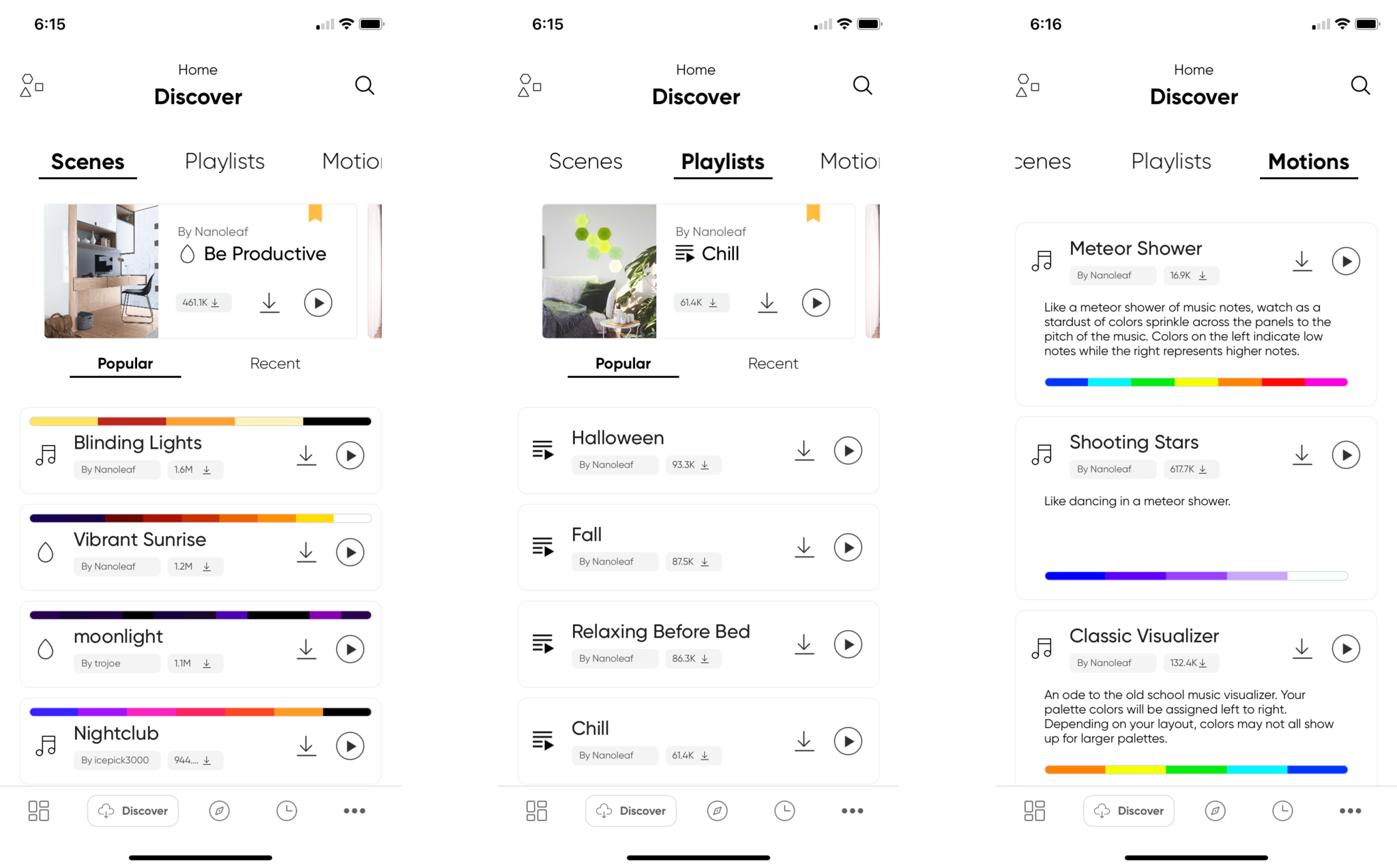
Pairing the Elements panels with the Nanoleaf Smarter Series app, available on iOS and Android, is also pretty straightforward with hub-free Wi-Fi connectivity. I like how I can control and customize my panels' brightness levels and color temperature from the app, with changes taking effect almost instantly consistently.
My favorite part of the Nanoleaf app is downloading and applying scenes created by the Nanoleaf community.
My favorite part of the Nanoleaf app is downloading and applying scenes created by the Nanoleaf community. There are tons of custom scenes to choose from, and each one has a convenient color palette preview that makes it a breeze to find a new favorite.
As someone who focuses on HomeKit for iMore, I prefer to stick to Apple's Home app for all of my smart home needs. Still, the Nanoleaf app is one of the few vendor apps that I open on a semi-frequent basis, thanks to the abundance of scenes. Another big reason to keep the Nanoleaf app around is the frequent software updates that enable additional functionality, like Thread border router capabilities, which are coming to the Elements and Nanoleaf Shapes lineup soon.

Speaking of HomeKit, I like how the Nanoleaf Elements appear just like the best HomeKit light bulbs, with dimming, color temperature, quick toggles, and scenes, all just a few taps away in the Home app. The same goes for Siri, with familiar commands like Hey Siri — turn on the lights or Hey Siri — set the lights to blue all available after setup, so I appreciate how everything just works without a sharp learning curve.
I also like how the Elements touch actions act as buttons for HomeKit accessories and how they work in automation. As a HomeKit button, I love that I can set an entire scene just by tapping a panel. Through automation, I like that my light panels can spring to life when I pass by a HomeKit motion sensor or when I flick on a HomeKit light switch in the same room.
Nanoleaf Elements: What I don't like
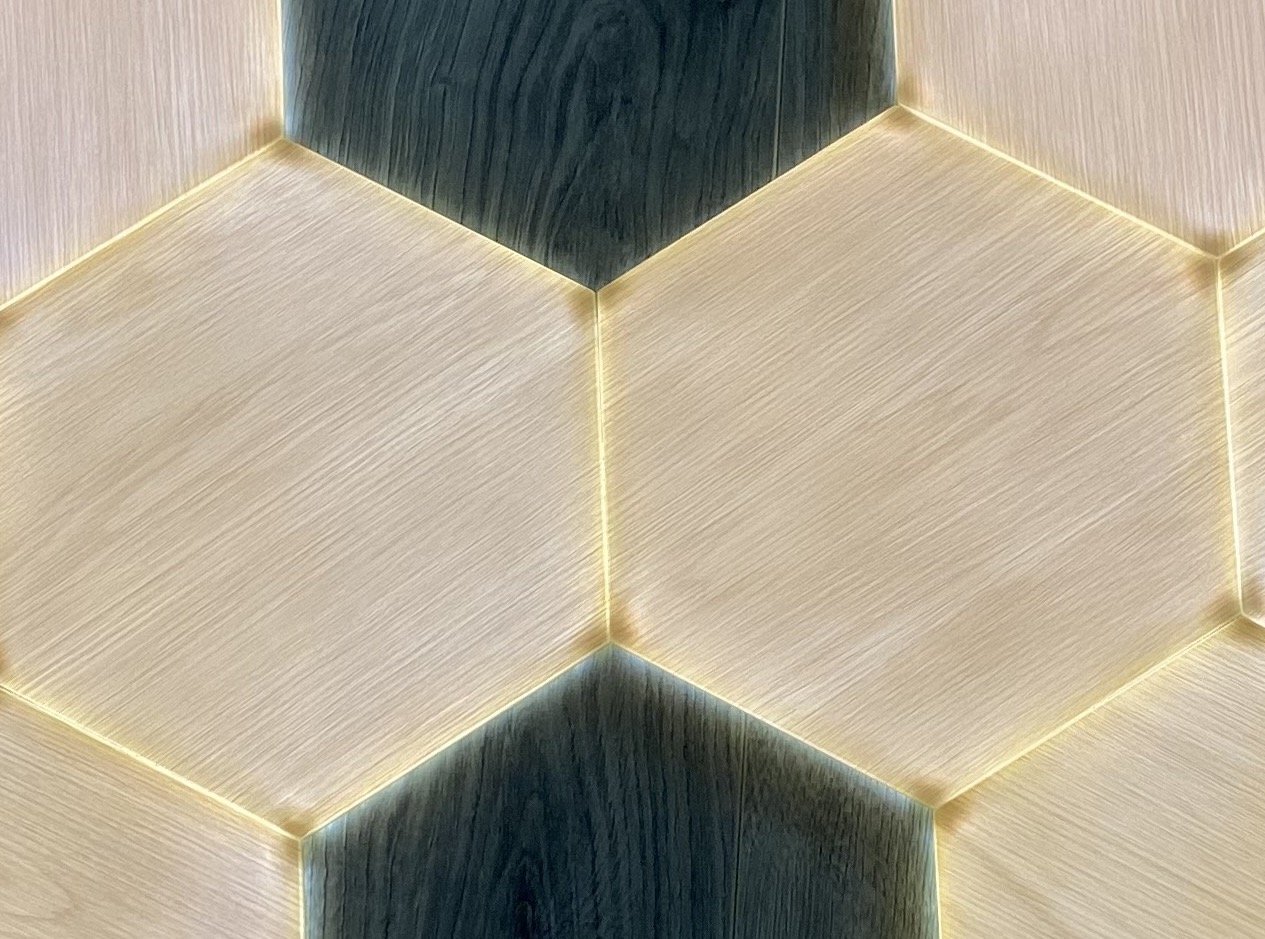
Although I enjoy browsing and creating scenes through the Nanoleaf app, navigation can be confusing — and at times, frustrating. Some controls and settings are buried behind long-presses with no explanation offered by the app, and the bottom tab bar lacks labels. Making matters worse, some settings — like the automatic color-shifting Circadian Lighting feature, are hidden in an entirely different area in the app from actual device settings. A lot of trial and error is involved with using the Nanoleaf app, and even after prolonged use, I still struggle to find the right screen to perform a specific task.
As much as I enjoy browsing and creating scenes through the Nanoleaf app, navigation can be confusing, even frustrating, at times.
Moving on from the app experience, like the Nanoleaf Shapes Hexagons, the Elements panels suffer from uneven lighting, which hurts the overall clean aesthetic. I am not a huge fan of the dark corners, which are especially pronounced on lighter shades of white at high brightness levels, and how the edges of the panels are lighter than the center.
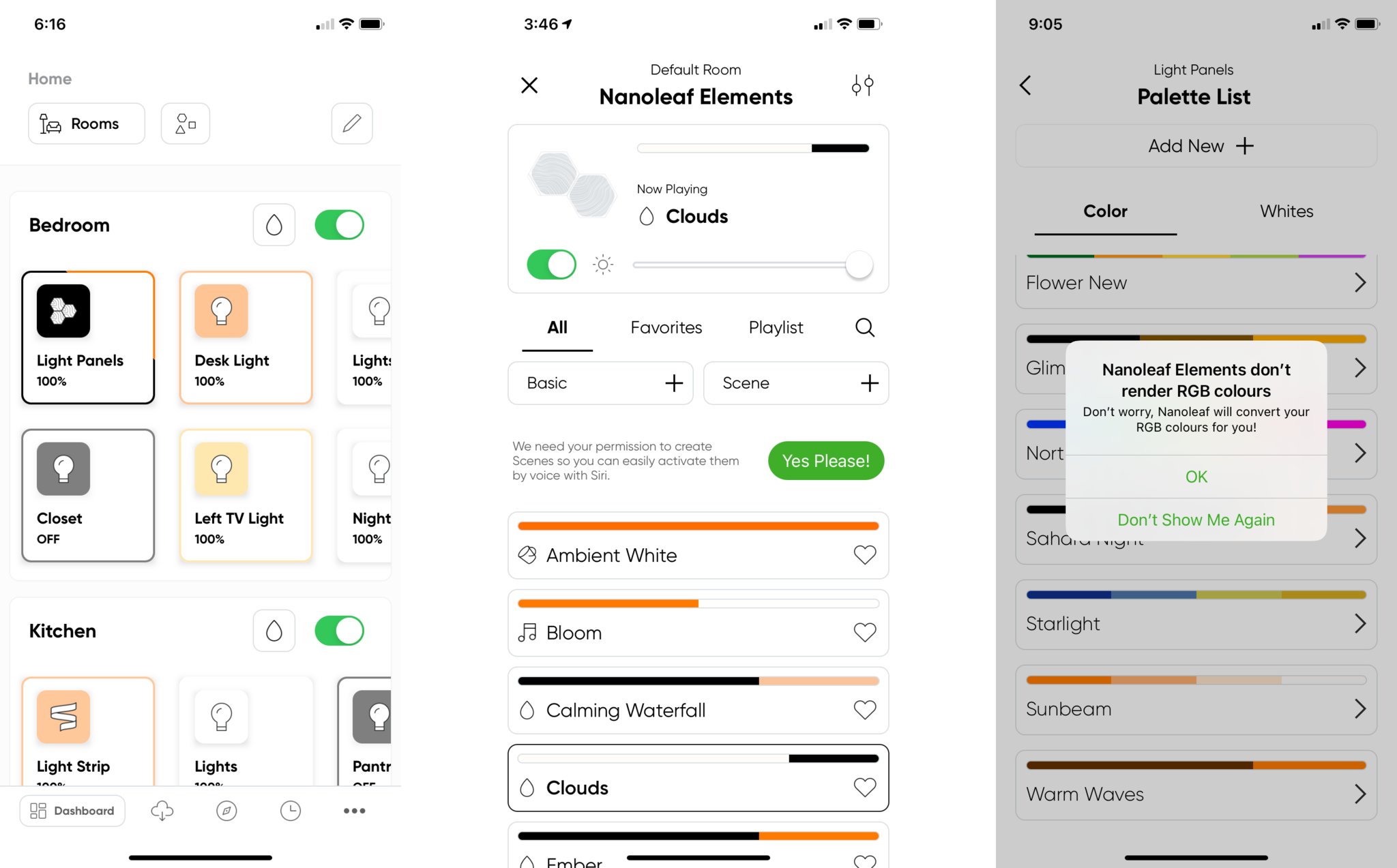
Another gripe that I have with the Elements panels is the relatively low brightness levels. Now, with the wooden look, I was prepared for reduced overall brightness when compared to Nanoleaf's color panels, but I didn't expect such a dramatic difference. At just 22 lumens each, the Elements are suitable for accent lighting only as they definitely will not light up an entire room on their own.
Of course, the biggest downside with the Nanoleaf Elements is the lack of RGB color capabilities. While Nanoleaf attempts to tune white color temperature based on colors found in scenes, I don't see any correlation to what is on display versus just picking a light or dark shade of white. Without color, the Elements — while visually appealing in their own right, don't quite have the wow factor you get with other panels from the company.
Nanoleaf Elements: Competition

With the wood-looks, the Nanoleaf Elements panels are genuinely in a class of their own. The closest competitor to the Elements panels is Nanoleaf's own Shapes series, which includes hexagons, triangles, and mini-triangles. The Nanoleaf Shapes Hexagons, which I took a look at a few months ago, use the same mounting system as the Elements and sport the exact physical dimensions.
Where things differ, though, are color capabilities and peak brightness levels. The Shapes Hexagon series can display millions of colors versus the limited adjustable white range of the Elements, making them much better at setting a specific mood within your home. The Shapes Hexagons also max out at 100 lumens of brightness per panel compared to the paltry 22 lumens of the Elements.
Another significant difference is the retail price for starter kits and expansion sets. The Elements panels come with a $100 premium over the Shapes Hexagon and the larger Shapes Triangles for a seven-panel kit. Three-panel expansion kits for the Elements cost $30 more than the Shapes lines, so depending on your needs, the Elements may end up costing more for fewer capabilities with the lack of color.
Nanoleaf Elements: Should you buy it?
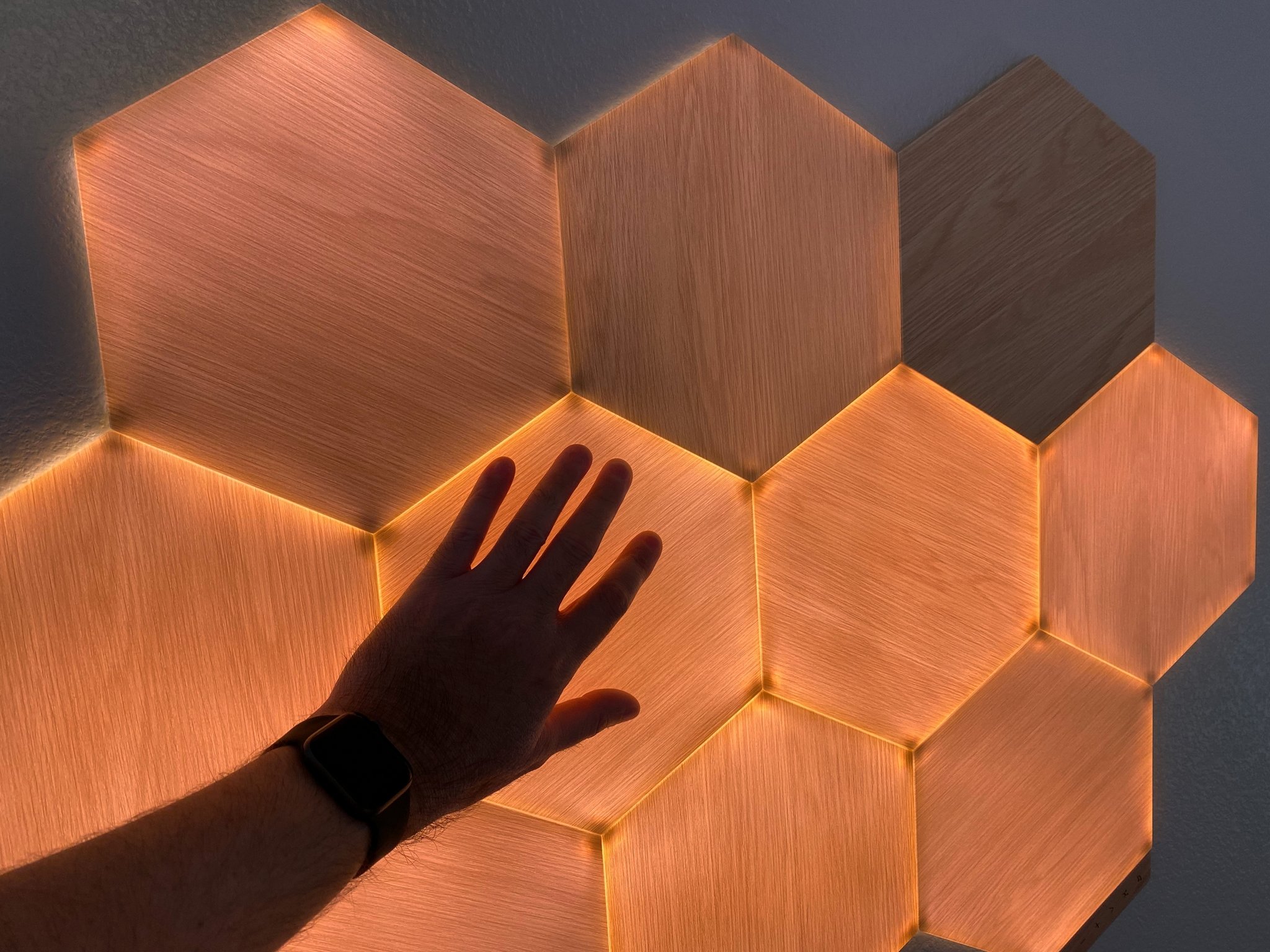
You should buy this if ...
- You want a classy alternative to color light panels
- You want assignable touch actions
- You want to control your panels via HomeKit, Alexa, or the Google Assistant
You shouldn't buy this if...
- You want colorful RGB light panels
- You have a limited budget for smart lighting
- You are expecting real wood
With a vastly different design from its competitors, choosing between the Nanoleaf Elements and another light panel system is relatively easy. If you want a light panel system that offers subtle accent lighting and looks more like a piece of home decor, then the Nanoleaf Elements are the obvious choice. However, if you want to make a statement with flashy colors and designs, you will most certainly be better off with another offering.
Despite a few limitations, the Nanoleaf Elements ultimately succeeds in its mission in creating a decor-friendly smart light panel system. While I would like to have color capabilities as a backup option — even if they wouldn't look quite right with the wood looks, or brighter overall peak brightness, the tradeoffs are worth it for me as I have longed for a smart lighting system that works with certain parts of my home. I am looking forward to seeing where Nanoleaf can take the Elements line in the future, and I hope that more vendors introduce smart home tech that marries the smarts with designs that fit into our homes.
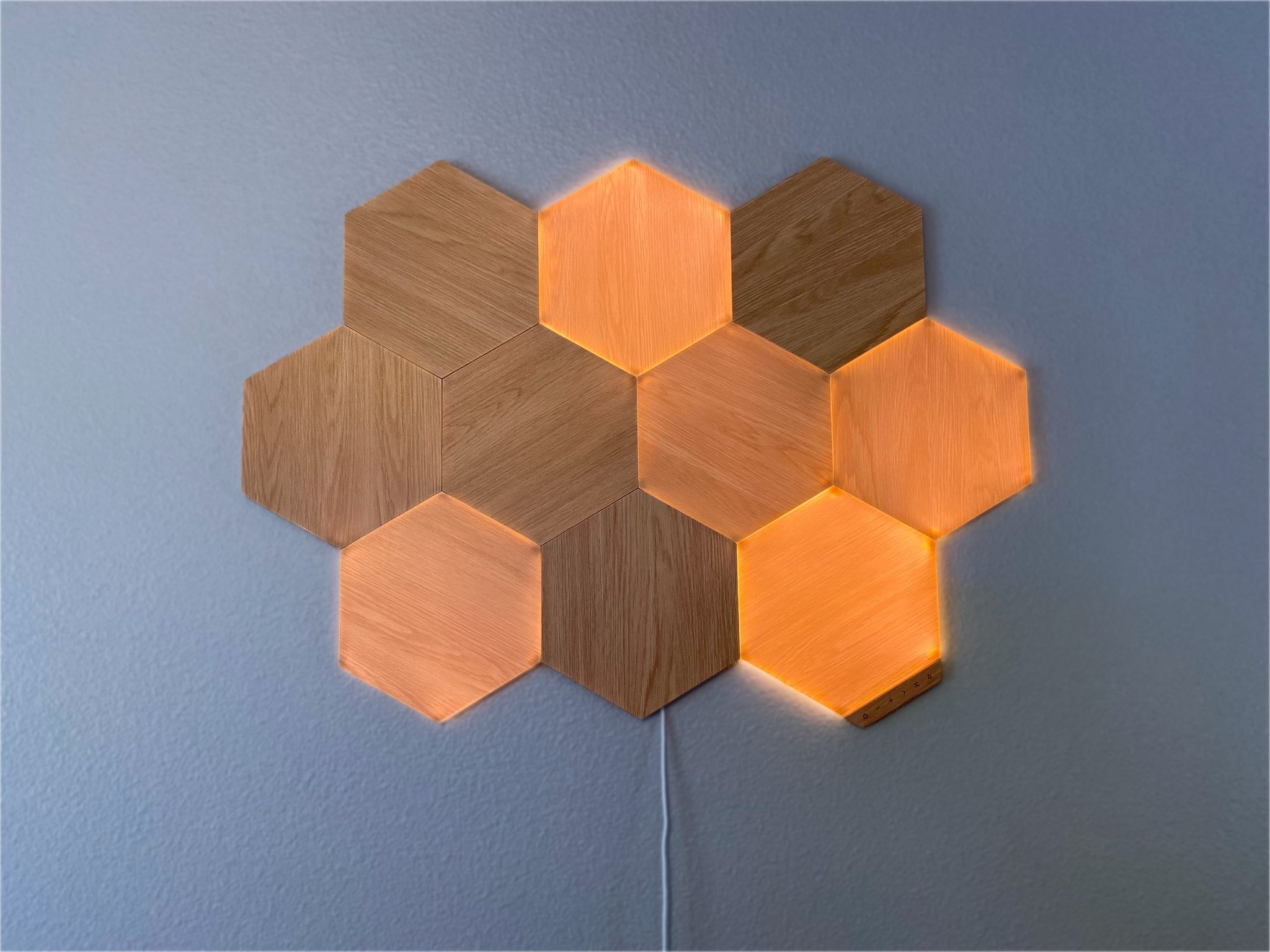





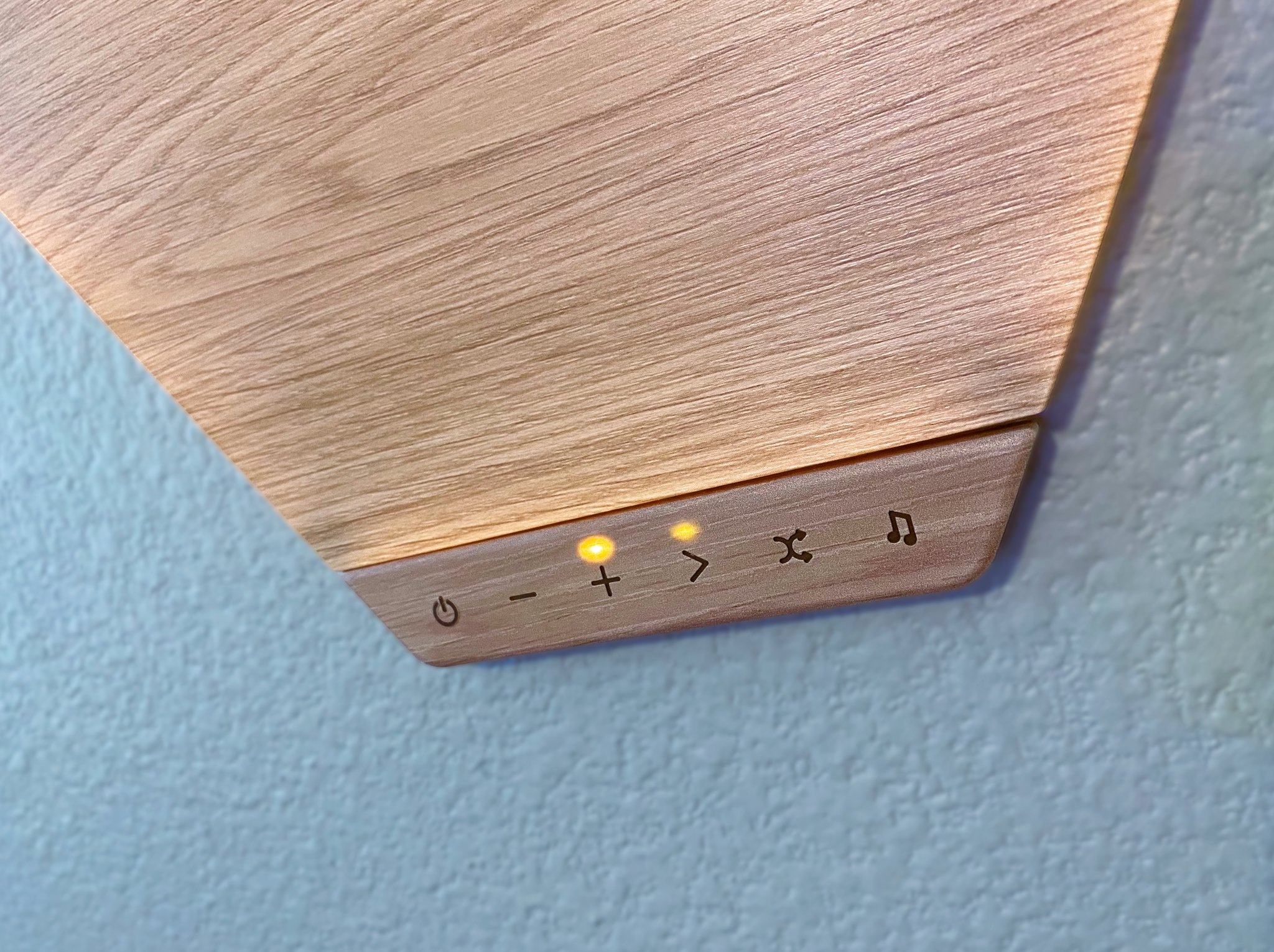



Christopher spends most of his time writing and dreaming about all things HomeKit and the Home app. Whether it is installing smart light switches, testing the latest door locks, or automating his households daily routines, Christopher has done it all.




